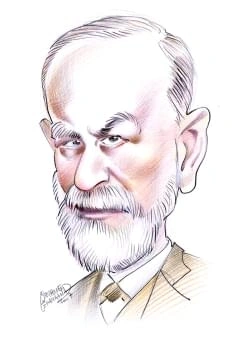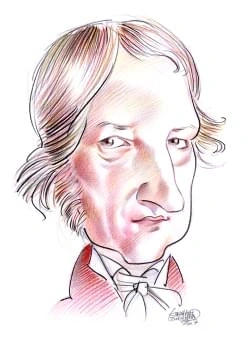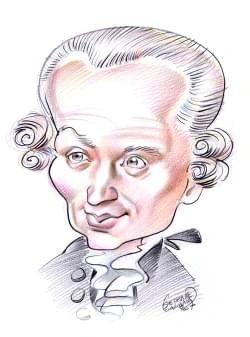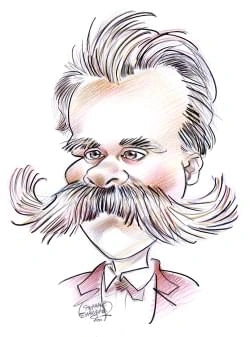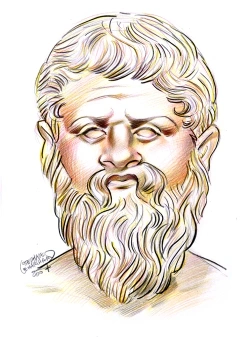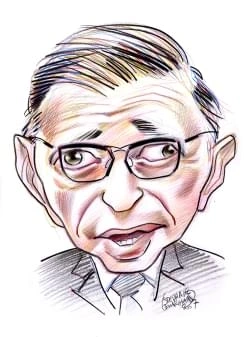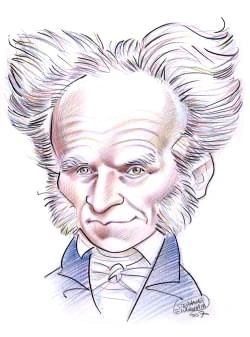1609 résultats pour "were"
-
Rutherford B.
Governor Hayes gave Ohio an honest administration. During his two separate terms (from 1868 to 1872 and then from 1876 to 1877) were conspicuous, in that age ofpolitical corruption, for freedom from scandal and irregularities. Even newspapers that supported the opposition Democratic Party praised his administration. Although a Democratic legislature in Hayes's first term obstructed many of his liberal measures, he was able to reform the prison system. During his second term aRepublican majority...
-
Church of Jesus Christ of Latter-day Saints.
yearly visited a book written in a hieroglyphic script on golden plates buried in a nearby hill; the book’s location, he said, had been disclosed to him by an angel. In 1830he completed the translation of these plates, “by the gift and power of God,” and published the Book of Mormon, which he believed to be a religious record of theancient inhabitants of North America. On April 6, 1830, he organized the Church of Christ, soon known by its present title, the Church of Jesus Christ of Latter-daySa...
-
Cambodia - country.
The population of Cambodia is 14,241,640 (2008 estimate). Population growth per year is estimated at 1.8 percent, one of the highest rates in Asia. The rate of infantmortality is also high. The population density is 81 persons per sq km (209 per sq mi), with the densest concentrations on the heavily cultivated central plain. Themountainous regions of the country, where malaria is widespread, are thinly populated, as are the poorly watered northern provinces. During the late 1970s, under thebruta...
-
Jerusalem - geography.
There are many other artifacts in the city, tied to various periods of history; those of Canaanite, Israelite, Greek, Roman, Arab, Crusader, and Ottoman origin areamong the more prominent. Modern attractions include the Israel Museum (completed in 1965), which houses the Shrine of the Book, where the Dead Sea Scrolls areexhibited; the Rockefeller Museum (opened in 1938), which contains archaeological finds; the Yad Vashem Holocaust Museum; the Museum of Biblical Archaeology; theMuseum of Islamic...
-
Bill Clinton.
When Arkansas governor David Pryor ran for the U.S. Senate in 1978, Clinton ran for governor. He promised to improve the state’s schools and highways and toimprove economic conditions so that more jobs would be created. At that time, the average income of people in Arkansas ranked 49th among the 50 states. Clinton woneasily, receiving 60 percent of the vote against four opponents in the Democratic primary election and 63 percent against the Republican candidate, Lynn Lowe, in thegeneral election...
-
Bill Clinton - USA History.
When Arkansas governor David Pryor ran for the U.S. Senate in 1978, Clinton ran for governor. He promised to improve the state’s schools and highways and toimprove economic conditions so that more jobs would be created. At that time, the average income of people in Arkansas ranked 49th among the 50 states. Clinton woneasily, receiving 60 percent of the vote against four opponents in the Democratic primary election and 63 percent against the Republican candidate, Lynn Lowe, in thegeneral election...
-
Fur Trade in North America - Canadian History.
Injured by the competition from the North West Company, the Hudson’s Bay Company changed its methods in the late 18th century and began extending its operationsinland. After a period of intense and often violent conflict, the two companies merged in 1821 under the charter of the Hudson’s Bay Company. The trade monopoly andpower to govern that had been originally given to Hudson’s Bay in 1670 were extended to all British-held territory west of Rupert’s Land. The company dominated mostof present-d...
-
World War II .
the Nazi-Soviet Pact was signed. In the part published the next day, Germany and the Soviet Union agreed not to go to war against each other. A secret protocol gaveStalin a free hand in Finland, Estonia, Latvia, eastern Poland, and eastern Romania. See also German-Soviet Nonaggression Pact. III MILITARY OPERATIONS In the early morning hours of September 1, 1939, the German armies marched into Poland. On September 3 the British and French surprised Hitler by declaring war onGermany, but they...
-
-
George Washington
I
INTRODUCTION
George Washington (1732-1799), first president of the United States (1789-1797) and one of the most important leaders in United States history.
A2 Promotion This was Washington’s first experience with the difficulties of raising troops while lacking equipment, clothing, and funds. Apparently he thought his efforts worthy ofsome recognition and successfully applied to Dinwiddie for a lieutenant colonel’s commission. He left Alexandria, Virginia, early in April with about 150 poorly equippedand half-trained troops. A3 First Battles Before he had advanced very far, Washington received news that the French had driven Trent’s men back from...
-
George Washington.
A2 Promotion This was Washington’s first experience with the difficulties of raising troops while lacking equipment, clothing, and funds. Apparently he thought his efforts worthy ofsome recognition and successfully applied to Dinwiddie for a lieutenant colonel’s commission. He left Alexandria, Virginia, early in April with about 150 poorly equippedand half-trained troops. A3 First Battles Before he had advanced very far, Washington received news that the French had driven Trent’s men back from...
-
George Washington
A2 Promotion This was Washington’s first experience with the difficulties of raising troops while lacking equipment, clothing, and funds. Apparently he thought his efforts worthy ofsome recognition and successfully applied to Dinwiddie for a lieutenant colonel’s commission. He left Alexandria, Virginia, early in April with about 150 poorly equippedand half-trained troops. A3 First Battles Before he had advanced very far, Washington received news that the French had driven Trent’s men back from...
-
Public Education in the United States.
opportunities for them to break out from whatever social or economic circumstances constrained their development. IV HIGHER EDUCATION During the 20th century participation in higher or postsecondary education in the United States increased as dramatically as it did in American high schools. At thebeginning of the century about 2 percent of Americans from the ages of 18 to 24 were enrolled in a college. There were fewer than 1,000 colleges then, with enrollmenttotaling about 157,000 students. N...
-
Korean War.
During the summer of 1949, South Korea had expanded its army to about 90,000 troops, a strength the North matched in early 1950. The North had about 150 SovietT-34 tanks and a small but effective air force of 70 fighters and 62 light bombers—weapons either left behind when Soviet troops evacuated Korea or bought from theUSSR and China in 1949 and 1950. By June 1950 American data showed the two armies at about equal strength, with roughly equal numbers amassed along the 38thparallel. However, thi...
-
Korean War - History.
During the summer of 1949, South Korea had expanded its army to about 90,000 troops, a strength the North matched in early 1950. The North had about 150 SovietT-34 tanks and a small but effective air force of 70 fighters and 62 light bombers—weapons either left behind when Soviet troops evacuated Korea or bought from theUSSR and China in 1949 and 1950. By June 1950 American data showed the two armies at about equal strength, with roughly equal numbers amassed along the 38thparallel. However, thi...
-
Louis XIV
I
INTRODUCTION
Louis XIV (1638-1715), king of France (1643-1715), known as the Sun King.
he could defend against attack from his enemies. In the first instance, Louis worked to tighten central control over the array of departments, regions, and duchies that together made up France. To this end, he revivedthe use of regional intendants, officials who were sent to the provinces with instructions to establish order and effective royal justice. Although agents of the centralgovernment, intendants worked closely with the local nobility and legal institutions to establish efficient admini...
-
Louis XIV.
he could defend against attack from his enemies. In the first instance, Louis worked to tighten central control over the array of departments, regions, and duchies that together made up France. To this end, he revivedthe use of regional intendants, officials who were sent to the provinces with instructions to establish order and effective royal justice. Although agents of the centralgovernment, intendants worked closely with the local nobility and legal institutions to establish efficient admini...
-
-
Korean War - U.
During the summer of 1949, South Korea had expanded its army to about 90,000 troops, a strength the North matched in early 1950. The North had about 150 SovietT-34 tanks and a small but effective air force of 70 fighters and 62 light bombers—weapons either left behind when Soviet troops evacuated Korea or bought from theUSSR and China in 1949 and 1950. By June 1950 American data showed the two armies at about equal strength, with roughly equal numbers amassed along the 38thparallel. However, thi...
-
Space Exploration - astronomy.
to produce 250,000 newtons (56,000 lb) of thrust. The Germans launched thousands of V-2s carrying explosives against targets in Britain and The Netherlands. Whilethey did not prove to be an effective weapon, V-2s did become the first human-made objects to reach altitudes above 80 km (50 mi)—the height at which outer spaceis considered to begin—before falling back to Earth. The V-2 inaugurated the era of modern rocketry. A2 Early Artificial Satellites During the years following World War II, the...
-
Native American Literature.
Many Native American writers of the 19th century wrote histories of their tribes. One tribal historian was David Cusick (Tuscarora), whose Sketches of Ancient History of the Six Nations (1827) was the first published tribal history. Tribal histories explained the deep ties that tribes had to their ancestral homelands. Beginning in the 18th century, these ties took on special meaning because the United States government began removing Native Americans from their traditional lands. These removal...
-
Central African Republic - country.
Manufacturing activity in the Central African Republic is very limited. Products include cottonseed, peanut, and sesame oils; textiles; leather goods; tobacco products;soap; flour; bricks; and paint. The output of electricity in 2003 was 106 million kilowatt-hours, 80.19 percent of which was generated in hydroelectric installations. Gemdiamonds account for nearly all the country’s mineral output and two-thirds of its export revenue. Production was 250,000 carats in 2004. Uranium was discovered i...
-
Railroads.
III GAUGES The gauge of track is the distance between the inner edges of the rails at points 1.59 cm (0.626 in) below the top of the heads. In the United States, Canada, theUnited Kingdom, Mexico, Norway, Sweden, and much of continental Europe, the standard gauge is 143.51 cm (56.5 in). Why this measurement became the standard isa matter of speculation. Probably the tradition is inherited from early tramroads built to accommodate wagons with axles 1.5 m (5 ft) long; some of the early edge rail...
-
Native American Architecture
I
INTRODUCTION
Native American Architecture, traditional architecture of the peoples of who lived in North America before Europeans arrived.
Mound Builders who resided in the area.John Elk III/Bruce Coleman, Inc. Another mound building culture, named Hopewell, also appears to have originated in Ohio but expanded west to Iowa, Kansas, and Oklahoma, south to Louisiana,Mississippi, and Alabama, east to Georgia and the Appalachian Mountains, and north to Wisconsin, Michigan, and lower Ontario in Canada. The Hopewell culture lastedfrom about 200 BC to 400 AD. Hopewell people built large, linear mounds to create enclosures in geometrical...
-
Fidel Castro.
result, Castro formed a radical branch of the Ortodoxo Party called the Radical Action Orthodox wing. This organization supported Chibás in the 1948 election. PrioSocarrás won the election, despite Castro’s efforts. After Chibás committed suicide in 1951, Castro believed he should become the leader of the Ortodoxo Party and ran for a seat in the Cuban House of Representatives inthe 1952 election. Before that election could occur, however, General Fulgencio Batista staged a bloodless coup d’etat...
-
Industrial Revolution
I
INTRODUCTION
Industrial Revolution, widespread replacement of manual labor by machines that began in Britain in the 18th century and is still continuing in some parts of the world.
The most important advance in iron production occurred in 1784 when Englishman Henry Cort invented new techniques for rolling raw iron, a finishing process thatshapes iron into the desired size and form. These advances in metalworking were an important part of industrialization. They enabled iron, which was relativelyinexpensive and abundant, to be used in many new ways, such as building heavy machinery. Iron was well suited for heavy machinery because of its strength anddurability. Because of t...
-
-
Industrial Revolution .
The most important advance in iron production occurred in 1784 when Englishman Henry Cort invented new techniques for rolling raw iron, a finishing process thatshapes iron into the desired size and form. These advances in metalworking were an important part of industrialization. They enabled iron, which was relativelyinexpensive and abundant, to be used in many new ways, such as building heavy machinery. Iron was well suited for heavy machinery because of its strength anddurability. Because of t...
-
William Shakespeare
I
INTRODUCTION
William Shakespeare
English playwright and poet William Shakespeare, who lived in the late 1500s and early 1600s, is regarded as the greatest
dramatist in the history of English literature.
Avon, Warwickshire, a prosperous town in the English Midlands. Based on this record and on the fact that children in Shakespeare’s time were usually baptized two orthree days after birth, April 23 has traditionally been accepted as his date of birth. The third of eight children, William Shakespeare was the eldest son of John Shakespeare, a locally prominent glovemaker and wool merchant, and Mary Arden, thedaughter of a well-to-do landowner in the nearby village of Wilmcote. The young Shakespeare...
-
Saturn - astronomy.
measurements of the magnetic field made by the Voyager space probes in the 1980s. Additional Cassini findings reported in March 2007 suggested that particles originating from geysers on the moon Enceladus may provide a partial explanation for thechange. The neutral gas particles become electrically charged and are captured by Saturn’s magnetic field, forming a disk of hot, ionized gas around the planet’sequator. The charged particles interact with the magnetic field and slow down the rotation of...
-
Somalia - country.
A Agriculture Livestock raising is the principal occupation in Somalia. The size of livestock herds began to recover in the mid-1990s after falling during the country’s civil war. Sheepand goats are the most numerous livestock, with smaller numbers of cattle. The principal crops grown are corn, sorghum, sugarcane, cassava, and bananas. B Forestry and Fishing While most wood is cut for fuel, Somalia’s major forestry export products before the 1990s were frankincense and myrrh. Fish is an import...
-
Byzantine Art and Architecture
I
INTRODUCTION
Archangel Michael
This depiction of the archangel Michael, in Saint Mark's Cathedral in Venice, Italy, is an example of ancient enamel art.
This Byzantine ivory relief shows Christ the Pantocrator, or ruler of the world, raising his hand in a gesture of blessing. Itcomes from the cover of a lectionary, or book containing portions of the scriptures, and dates from the second golden ageof Byzantine art, the late 10th century. The relief is in the Fitzwilliam Museum, Cambridge, England.Bridgeman Art Library, London/New York Mosaics were the favored medium for the interior adornment of Byzantine churches. The small cubes, or tesserae, t...
-
Métis - Canadian History.
authority in the Northwest Rebellion. As in 1869, they were worried about title to their river lots, which were unsurveyed and were therefore omitted from the surveyadopted by the Department of the Interior. The Métis demanded a distribution of land and scrip, as had occurred in Manitoba after 1870. The Métis action at Batoche encouraged several bands of indigenous nations (Cree, Assiniboine, and Sioux) to take up arms. Threatened with a general rising across theNorthwest Territories, the Canadi...
-
Hundred Years' War.
knowledge of English tactics. Du Guesclin became Constable of France (head of the army) in 1370, and when he died in 1380, Clisson succeeded him. Charles also reorganized the French military, developing a full-time, professional army for the first time, and established a regular system of taxation to pay for it. Inaddition, France gained an important ally on the throne of the Spanish kingdom of Castile, Henry II, who had pledged support for Charles V. When the Caroline war began in 1369, the Eng...
-
Hundred Years' War .
knowledge of English tactics. Du Guesclin became Constable of France (head of the army) in 1370, and when he died in 1380, Clisson succeeded him. Charles also reorganized the French military, developing a full-time, professional army for the first time, and established a regular system of taxation to pay for it. Inaddition, France gained an important ally on the throne of the Spanish kingdom of Castile, Henry II, who had pledged support for Charles V. When the Caroline war began in 1369, the Eng...
-
-
Christopher Columbus
I
INTRODUCTION
Christopher Columbus (1451-1506), Italian-born Spanish navigator who sailed west across the Atlantic Ocean in search of a route to Asia but achieved fame by making
landfall in the Americas instead.
explorers, adventurers, entrepreneurs, merchants, and any others who saw their fortunes tied to the trade winds and ocean currents. Columbus’s brother Bartholomewworked in Lisbon as a mapmaker, and for a time the brothers worked together as draftsmen and book collectors. Later that year, Columbus set sail on a convoy loadedwith goods to be sold in northern Atlantic ports. In 1478 or 1479 Columbus met and married Felipa Perestrello e Moniz, the daughter of a respected, though relatively poor, nob...
-
Christopher Columbus.
explorers, adventurers, entrepreneurs, merchants, and any others who saw their fortunes tied to the trade winds and ocean currents. Columbus’s brother Bartholomewworked in Lisbon as a mapmaker, and for a time the brothers worked together as draftsmen and book collectors. Later that year, Columbus set sail on a convoy loadedwith goods to be sold in northern Atlantic ports. In 1478 or 1479 Columbus met and married Felipa Perestrello e Moniz, the daughter of a respected, though relatively poor, nob...
-
Christopher Columbus.
explorers, adventurers, entrepreneurs, merchants, and any others who saw their fortunes tied to the trade winds and ocean currents. Columbus’s brother Bartholomewworked in Lisbon as a mapmaker, and for a time the brothers worked together as draftsmen and book collectors. Later that year, Columbus set sail on a convoy loadedwith goods to be sold in northern Atlantic ports. In 1478 or 1479 Columbus met and married Felipa Perestrello e Moniz, the daughter of a respected, though relatively poor, nob...
-
Christopher Columbus - explorer.
explorers, adventurers, entrepreneurs, merchants, and any others who saw their fortunes tied to the trade winds and ocean currents. Columbus’s brother Bartholomewworked in Lisbon as a mapmaker, and for a time the brothers worked together as draftsmen and book collectors. Later that year, Columbus set sail on a convoy loadedwith goods to be sold in northern Atlantic ports. In 1478 or 1479 Columbus met and married Felipa Perestrello e Moniz, the daughter of a respected, though relatively poor, nob...
-
Comoros - country.
Since 1981 the currency has been the Comorian franc. The Comorian franc had a fixed exchange rate with the French franc of 50 to 1 until 1994, when the rate was changed to 75 Comorian francs to 1 French franc. In 2006, the Comorian franc exchanged at an average of 392 to U.S.$1. Transport between the islands is mostly by air, and there is an international airport at Hahaia on Njazidja where jets can land. Road networks have been built betweenmost of the main island settlements, but the mountai...
-
Warren G.
In his few campaign speeches, Harding relied mainly on the political effectiveness of bland generalities. Sometimes his statements were deliberately confusing. Forexample, he promised internationally minded voters that he would support an “association of nations,” while at the same time he promised “America first!” toisolationists. In this way he won the support of influential Republicans who believed in the League of Nations as well as those who opposed it. Harding's inoffensive standon the lea...
-
Cuban Revolution.
Confederation of Labor, threw its support behind Batista. In the same month, the U.S. government cut off weapons sales to Batista’s government. U.S. envoys andpolitical moderates in Cuba tried to convince Batista to leave power peacefully, but Batista refused. Meanwhile, revolutionaries from Castro’s movement and from otherorganizations escalated violent resistance. During the second half of 1958, guerrillas seized ground in the countryside from the army. In the cities, several of Batista’sleadi...
-
Rap
I
INTRODUCTION
Jay-Z
Rapper Jay-Z rose to popularity with such albums as Vol.
Run-DMCTypically in rap music, vocalists recite rhyming lyrics in time to a beat that may be sampled from prerecorded music byother groups. Black youths developed rap music on the streets of inner cities in the United States during the 1970s, butthe style has expanded to include a wider variety of performers and audiences. The rap group Run-DMC, shown here, wasa powerful early influence in the genre. The group helped bring rap music into the mainstream when it released “WalkThis Way” (1986), a s...
-
-
Nebraska - geography.
by natural resource districts to limit the rate of pumping for irrigation. C Climate Nebraska has a typical continental climate with wide seasonal variations in temperature. C1 Temperature Winter temperatures below -20°C (0° F) and summer temperatures in the upper 30°s C (lower 100°s F) are common. The average January temperature varies from about -7° C (about 20° F) in the northeast to about -2° C (about 29° F) in the southwest. The average for July, thehottest month, ranges from about 26° C...
-
Nebraska - USA History.
by natural resource districts to limit the rate of pumping for irrigation. C Climate Nebraska has a typical continental climate with wide seasonal variations in temperature. C1 Temperature Winter temperatures below -20°C (0° F) and summer temperatures in the upper 30°s C (lower 100°s F) are common. The average January temperature varies from about -7° C (about 20° F) in the northeast to about -2° C (about 29° F) in the southwest. The average for July, thehottest month, ranges from about 26° C...
-
Zachary Taylor.
army fled back across the Río Grande into Mexico. When Polk got word of the victories, he promoted Taylor to major general. Congress awarded him two gold medals. B1 Battle of Monterrey In September 1846, Taylor began an invasion of northern Mexico. His army of 6000 consisted of regulars and volunteers. On September 21 he attacked the fortifiedcity of Monterrey, which was defended by more than 7000 Mexicans under General Pedro de Ampudia. Taylor divided his army, giving Brigadier General William...
-
Zachary Taylor
army fled back across the Río Grande into Mexico. When Polk got word of the victories, he promoted Taylor to major general. Congress awarded him two gold medals. B1 Battle of Monterrey In September 1846, Taylor began an invasion of northern Mexico. His army of 6000 consisted of regulars and volunteers. On September 21 he attacked the fortifiedcity of Monterrey, which was defended by more than 7000 Mexicans under General Pedro de Ampudia. Taylor divided his army, giving Brigadier General William...
-
William Howard Taft.
considered him an ideal successor. Because Roosevelt himself was satisfied that Taft's election would ensure that his reform programs were continued, he used hisinfluence with each state's Republican Party to get Taft the nomination. As a result, Taft became the Republican candidate on the first ballot. He was elected president in1908 with a popular vote of 7,675,320 to 6,412,294 for Nebraska editor and Democratic candidate William Jennings Bryan, and an electoral vote of 321 to Bryan's 162.Alth...
-
William Howard Taft
considered him an ideal successor. Because Roosevelt himself was satisfied that Taft's election would ensure that his reform programs were continued, he used hisinfluence with each state's Republican Party to get Taft the nomination. As a result, Taft became the Republican candidate on the first ballot. He was elected president in1908 with a popular vote of 7,675,320 to 6,412,294 for Nebraska editor and Democratic candidate William Jennings Bryan, and an electoral vote of 321 to Bryan's 162.Alth...
-
Communism.
In Britain, Robert Owen, a philanthropic Welsh manufacturer, strove against the social problems brought about by the Industrial Revolution and sought to improve thewelfare of workers. As manager of a cotton mill, he enhanced the environment of his workers by improving their housing, modernizing mill equipment for greater safetyand sanitation, and establishing low-priced stores for the workers and schools for their children. Owen believed that workers, rather than governments, should createthe in...
-
Communism .
In Britain, Robert Owen, a philanthropic Welsh manufacturer, strove against the social problems brought about by the Industrial Revolution and sought to improve thewelfare of workers. As manager of a cotton mill, he enhanced the environment of his workers by improving their housing, modernizing mill equipment for greater safetyand sanitation, and establishing low-priced stores for the workers and schools for their children. Owen believed that workers, rather than governments, should createthe in...
-
-
Indian Art and Architecture
I
INTRODUCTION
Art on the Indian Subcontinent
This map highlights places in India and Pakistan where prominent examples of Indian art and architecture have been
produced.
Sun Temple of KonarakThis 13th-century relief depicting a wheel of the chariot of Indian sun god Surya is situated in the Konarak temple. Thetemple, dedicated to Surya, is situated at Puri in the Gulf of Bengal.Keren Su/Corbis The arts of India expressed in architecture, sculpture, painting, jewelry, pottery, metalwork, and textiles, were spread throughout the Far East with the diffusion ofBuddhism and Hinduism and exercised a strong influence on the arts of China, Japan, Myanmar (formerly known...
-
Jimmy Carter.
B Election of 1976 Carter apparently decided as early as 1972, halfway through his four-year term as governor, that he would seek the presidency of the United States. Soon after the1972 election, his campaign manager drew up a detailed campaign strategy. Carter followed the plan closely, beginning an exhausting schedule of campaigning as soonas his gubernatorial term ended. When Carter formally announced in January 1975 that he was a candidate for president, he had almost no national reputation...
}})
